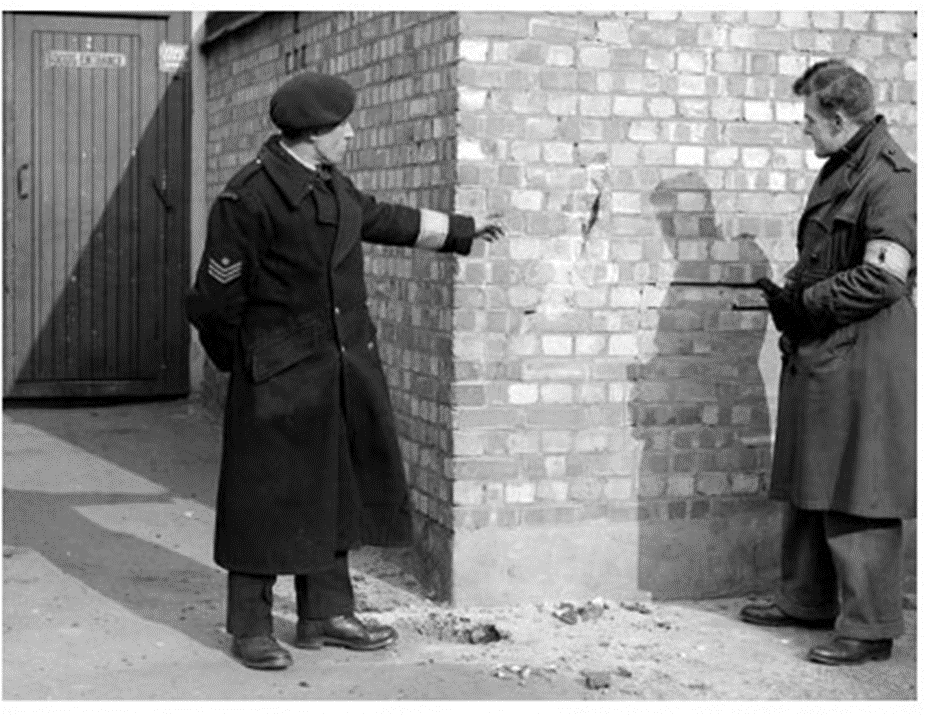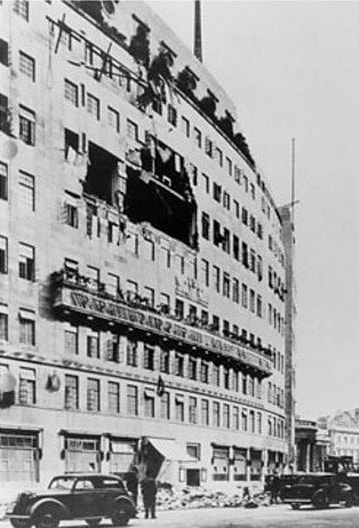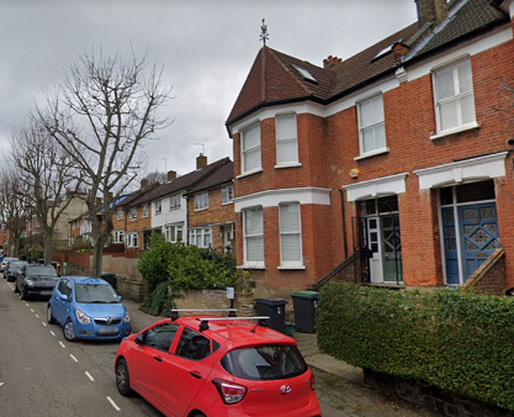|
Some ARP Wardens and Policemen were trained in the reconnaissance of unexploded bombs. This was an extremely dangerous undertaking as Delayed Action bombs were designed to explode a short time after impact. Other bombs were designed to explode if disturbed. Their detonation could be caused by vibration from a passing vehicle, or by other bombs nearby. ARP personnel did lose their lives carrying these important duties. Those trained in Bomb Reconnaissance wore an armband, later a sewn on patch.  Norfolk based Bomb Reconnaissance Officers examine where an unexploded anti-aircraft shell struck a wall before hitting the ground. (Notice that both men are wearing the Bomb Reconnaissance arm band. The chap on the left is wearing it low on the sleeve, no doubt to avoid covering his other insignia.) One Warden killed investigating a UXB was Charles Gaetjens. On outbreak of war he signed up and went with the Royal Artillery to France. Evacuated at Dunkirk, he was invalided out and joined the ARP. Gaetjens was killed as a result of injuries sustained by a bomb that exploded 52 minutes after it hit the BBC’s Broadcasting House on 15 October 1940. At that time a number of people, including Gaetjens, were assessing how to remove the bomb. Six others were also killed by the blast, the muffled explosion heard by listeners to the nine o'clock news as it blew a hole in the side of the building. Many properties had parachute mines crash through their roofs without exploding. These could be temperamental and detonate if disturbed. One such mine hit 21 Quernmore Road, Harringay, London. In the early hours of 27 September, 1940, a message was received at the Borough’s Central A.R.P. Depot, stating that a Rescue Party was required at this property. ARP personnel departed at once, under Leader Sidney Harold (a 36-year-old carpenter) and Deputy Leader Joseph Sweetlove (another carpenter, aged 33). On arrival, Harold ordered his men to leave their steel helmets and other un-necessary equipment which might affect the mine magnetically, in their lorry at the end of the road. The property was a large house with four floors. On entry through the front door, it could be seen that an unexploded mine was lodged in the first floor with its nose protruding through the ceiling over the entrance hall. An an old lady was known to be on the top floor. Harold judged it unsafe to attempt to go upstairs, as this might explode the mine. He therefore had a ladder put up in front of the house and ascended it, followed by his Deputy, Sweetlove. They could plainly see the old lady who was very frightened, lying in bed. She had locked the door of the room before retiring. To reassure her, the men lit their badges up with their torches and then forced an entry through the window. They explained the situation but she seemed unwilling to accompany them. Eventually, however, she asked for time to put on some clothes. To this Harold consented, but when he found that she was evidently intending to make a ‘full-dress’ occasion of it, he would have no more. Sweetlove put her over his shoulder and went down the ladder, assisted by other members of the rescue squad, plumber, George Denton and bricklayer, Charles Johnson. Other members of the squad, Hymms, Hutton and Brodie, were also at hand waiting in front of the house. They were all very much at risk from the mine. During the whole incident, shells were bursting overhead and shrapnel was falling, while a nearby gun was making the whole building vibrate in such a manner that it threatened to dislodge the mine from its precarious position and explode it at any moment. In fact at 03.33 the mine did explode, destroying number 21, and the adjoining houses, whilst blast rendered almost every other house in the street uninhabitable. The evacuation had been so effective, however, that there were no serious casualties. It is my intention to put a number of similar stories of the bravery of people like those above into a book. It will focus on ‘civvies’ who spent time around UXBs during WW2 in order to help others. Watch this space!
If you are interested in UXBs, please check-out my previous books, ‘Bomb Disposal in World War Two’, and ‘Disarming Hitler’s V-Weapons’.
2 Comments
Raymond Sweetman
11/15/2021 10:41:23
Via a query to the Royal Engineers, I was referred to your 'Bomb Disposal in WW2' book and am shortly going to obtain it.
Reply
Website owner
11/15/2021 10:51:33
Send a message to me via the email address given on the Contact page of this website. I'll then put you in touch with Chris.
Reply
Your comment will be posted after it is approved.
Leave a Reply. |
Please support this website's running costs and keep it advert free
Categories
All
Archives
June 2024
|
|
|
Copyright © 2018–2024
|


 RSS Feed
RSS Feed